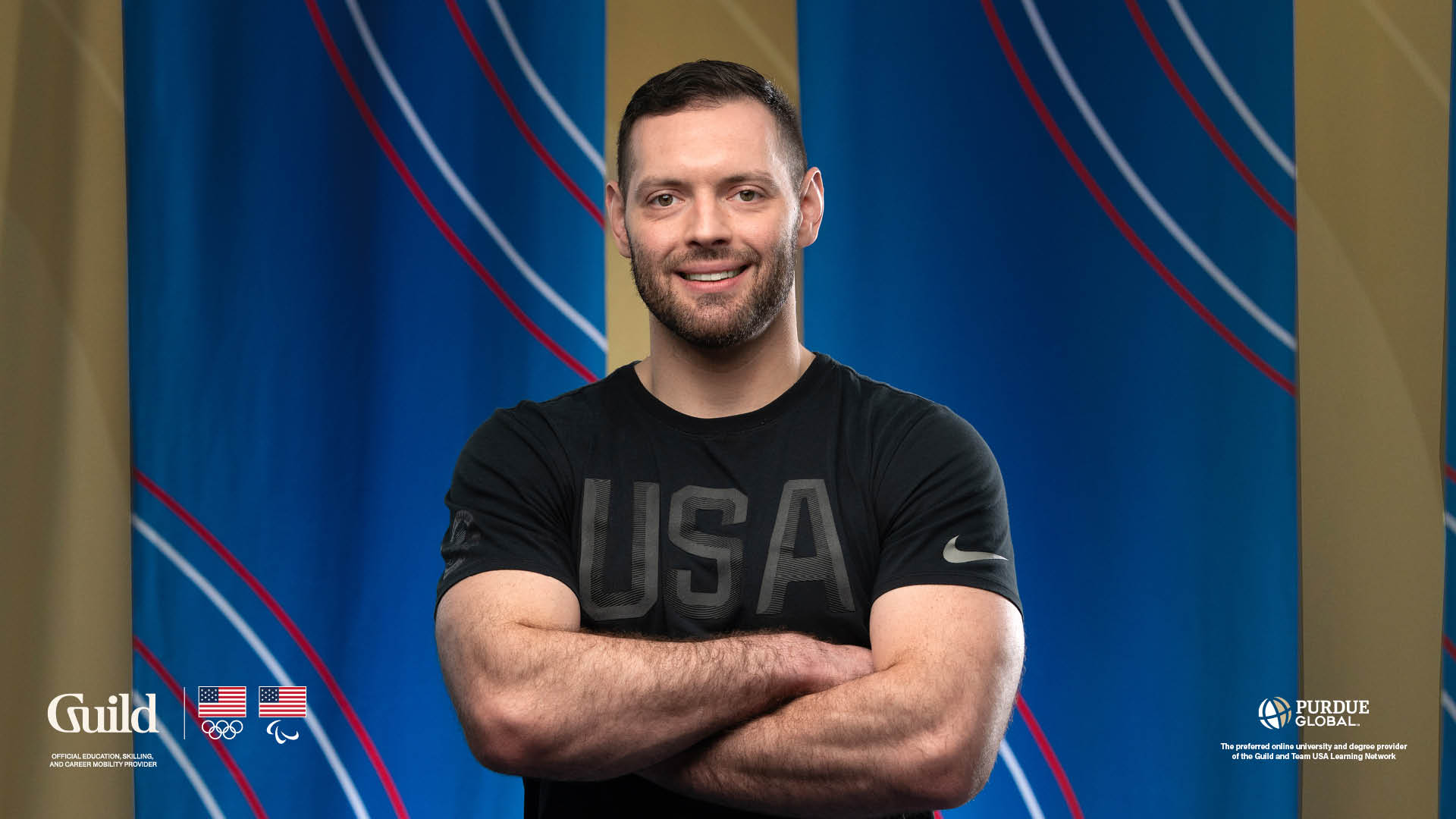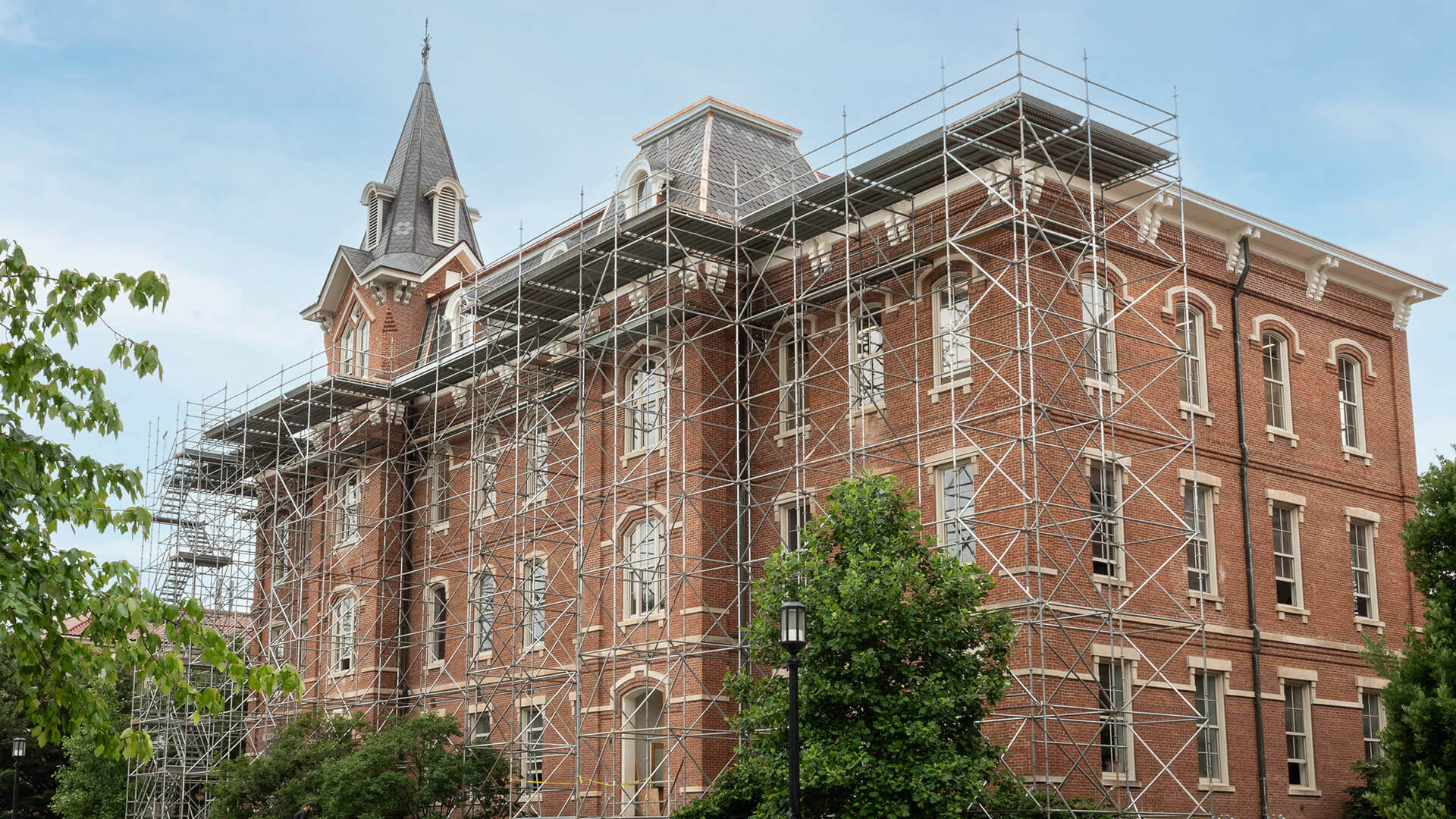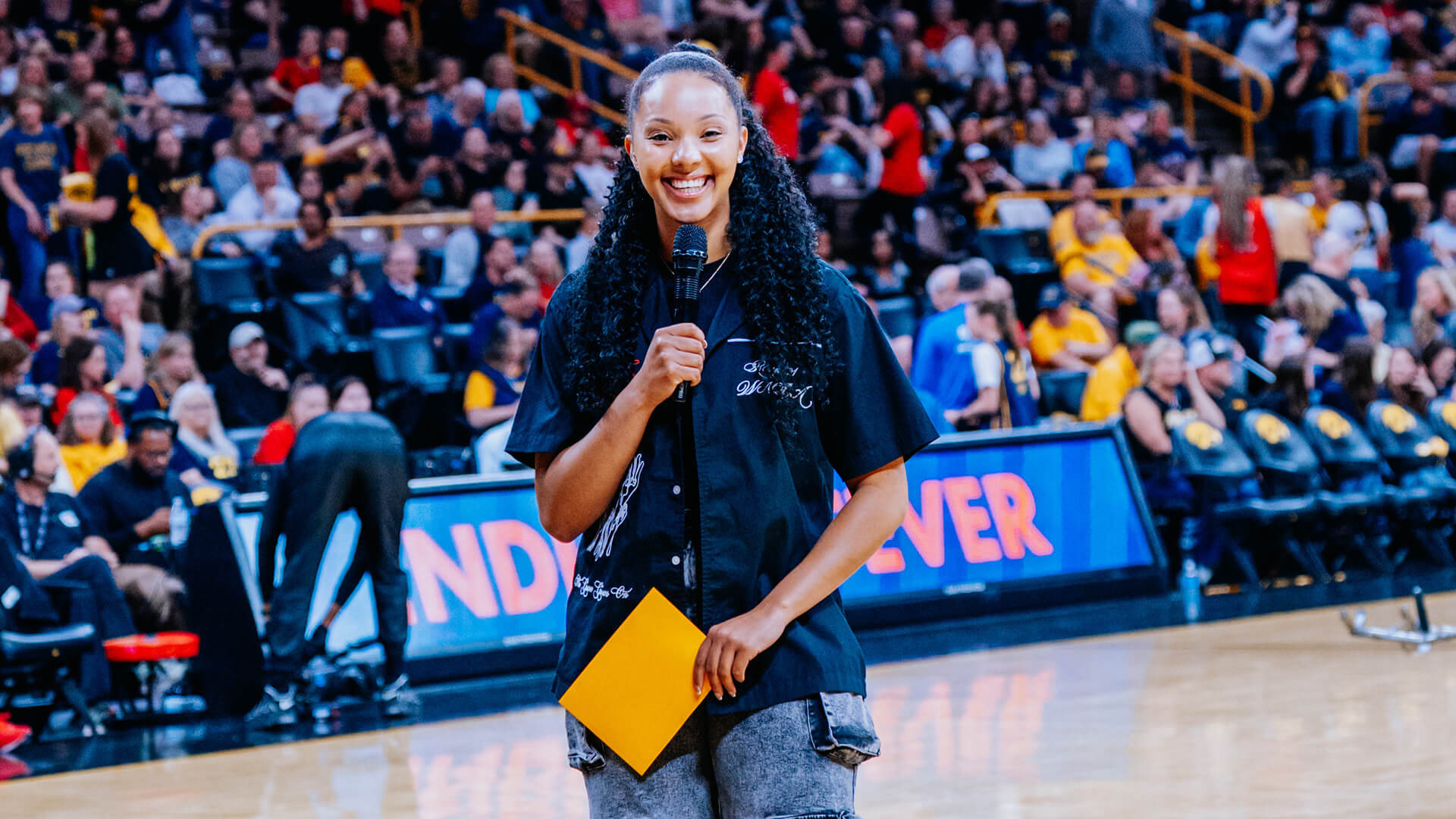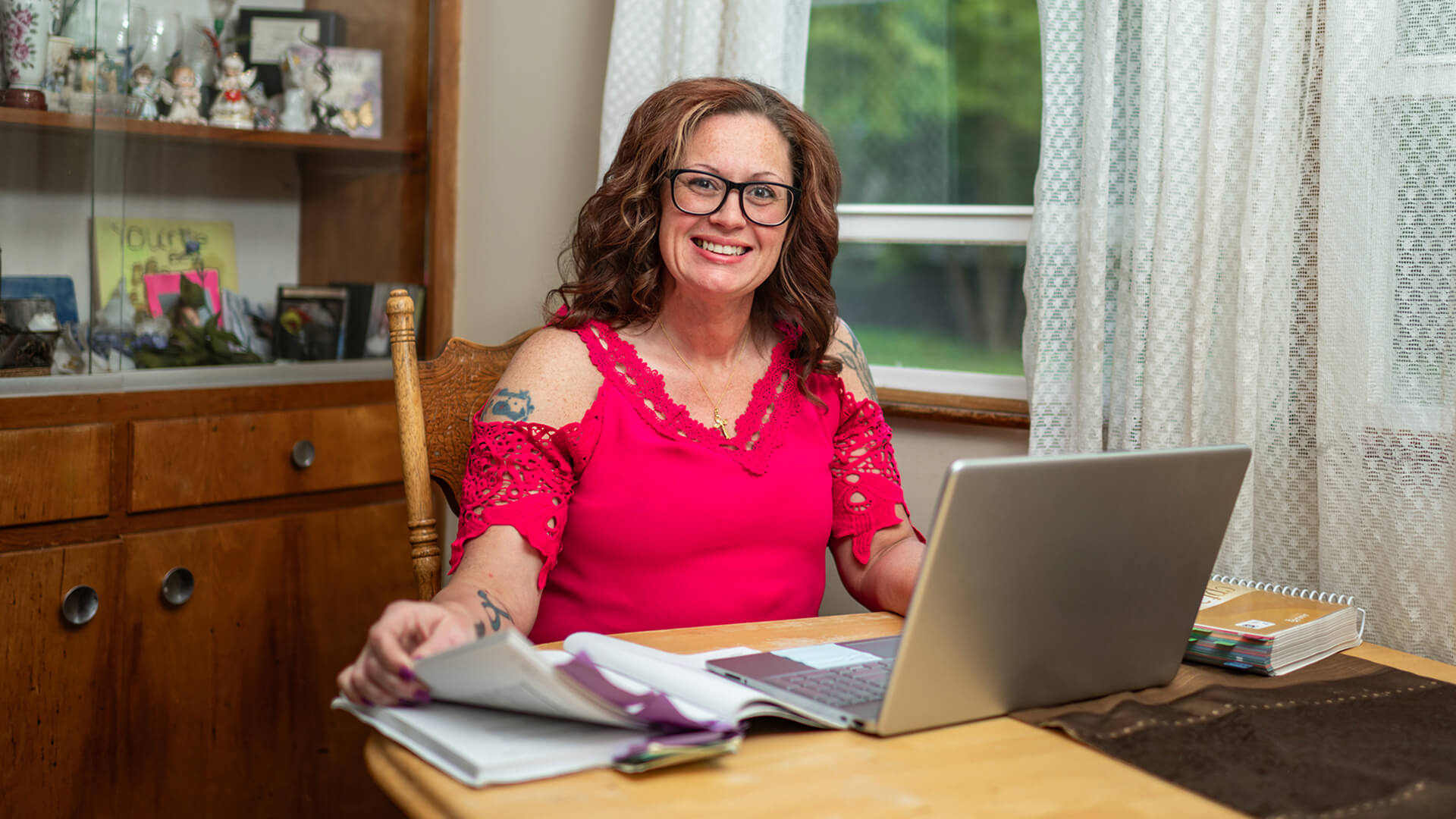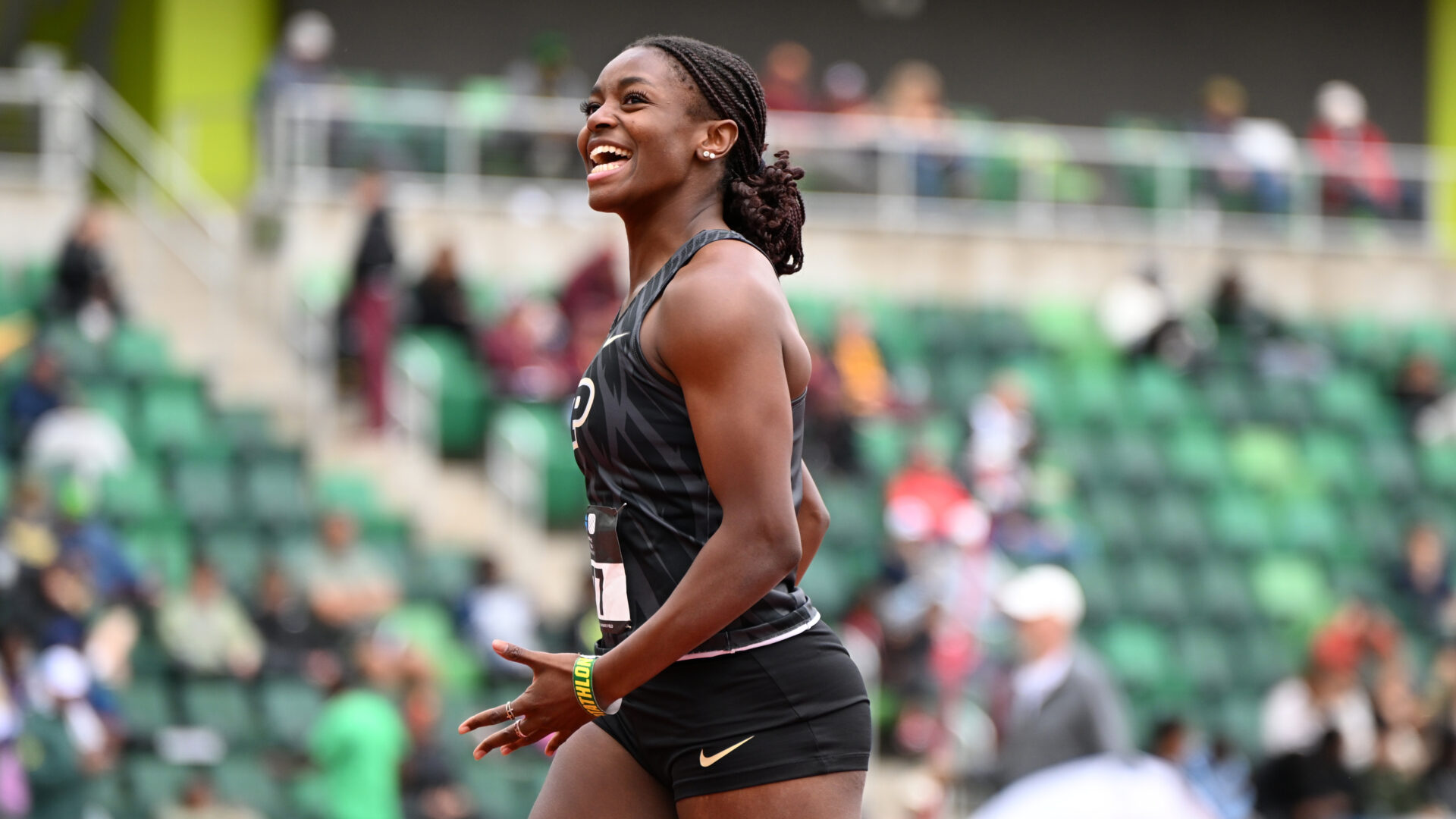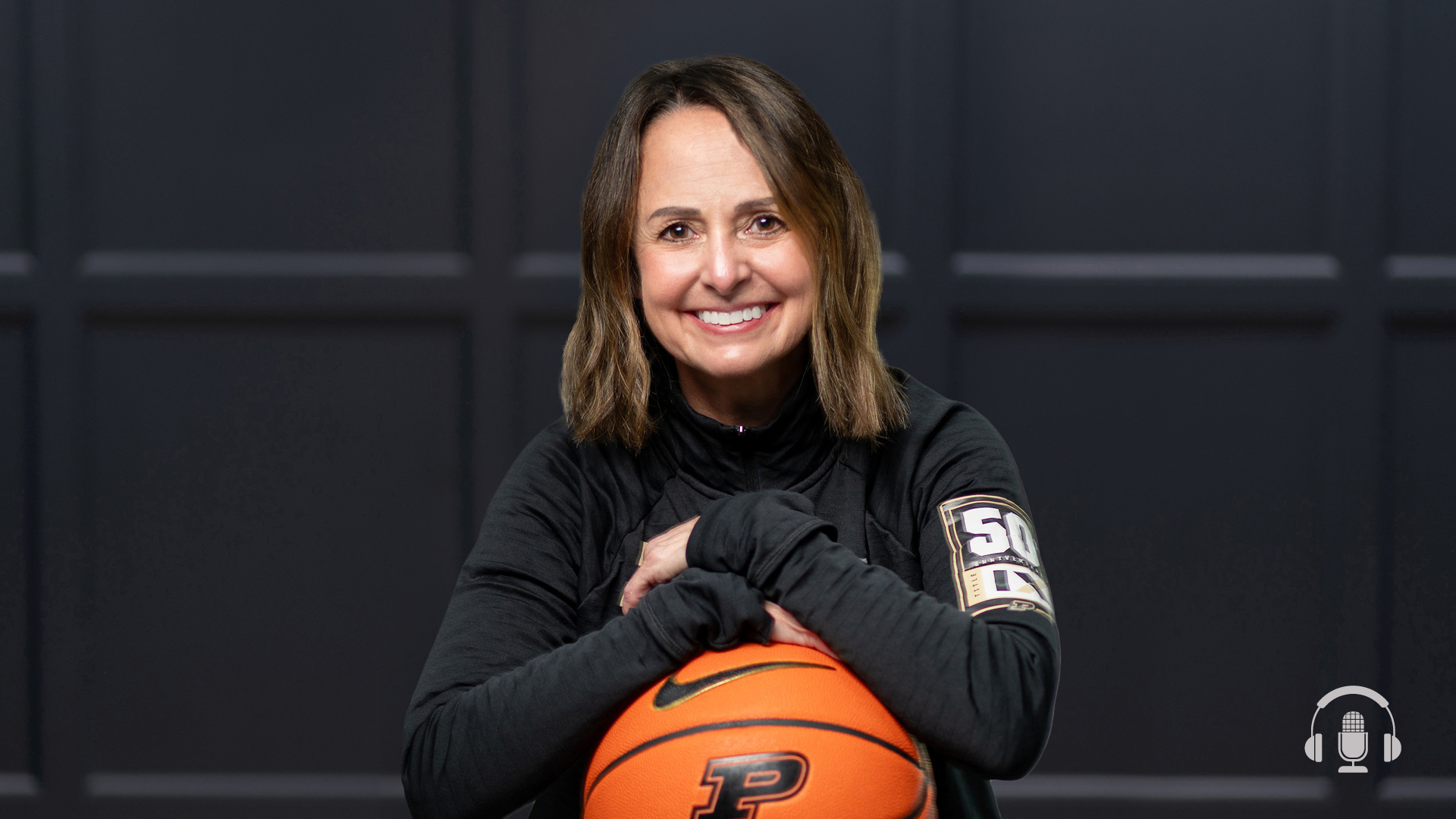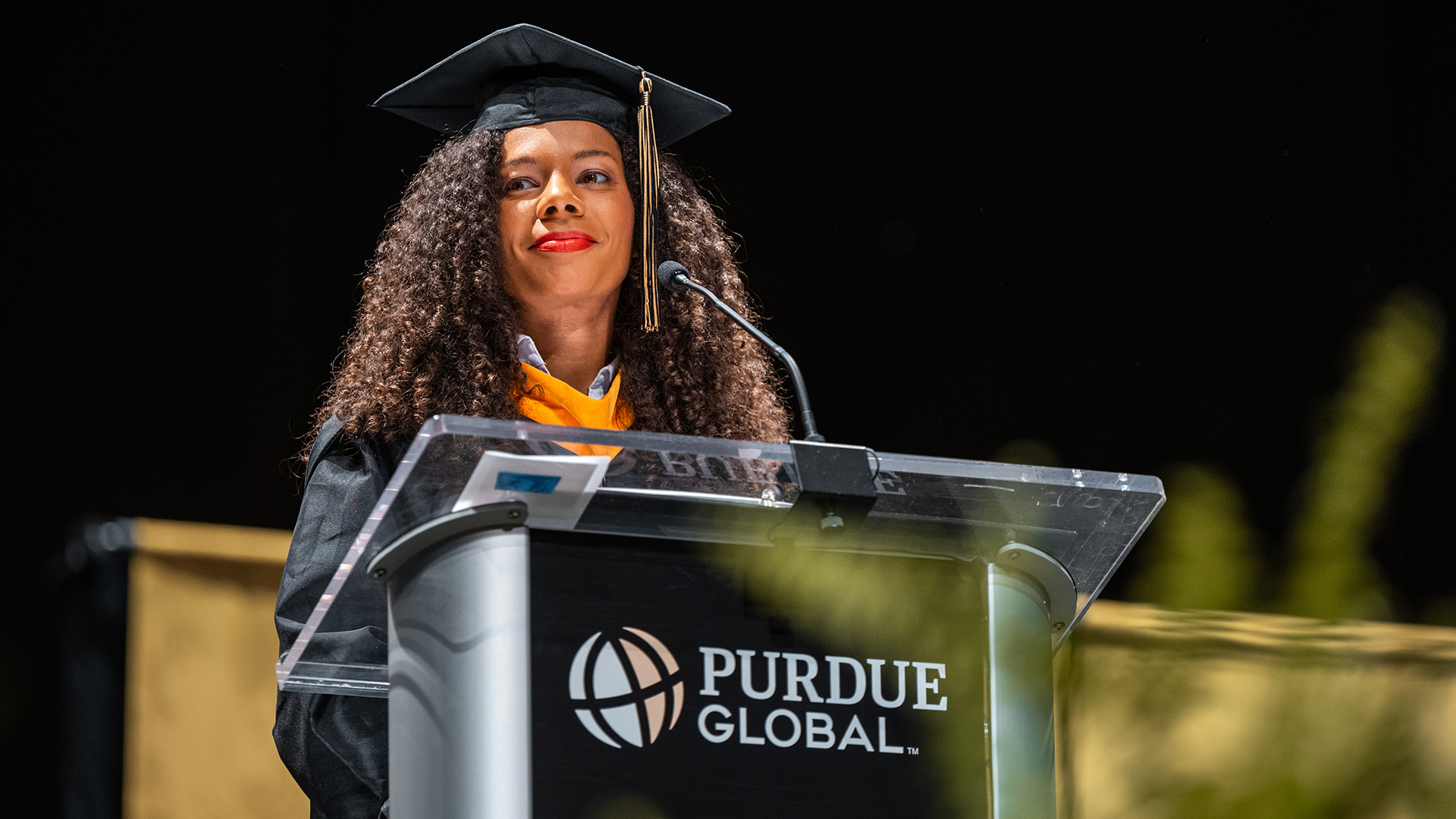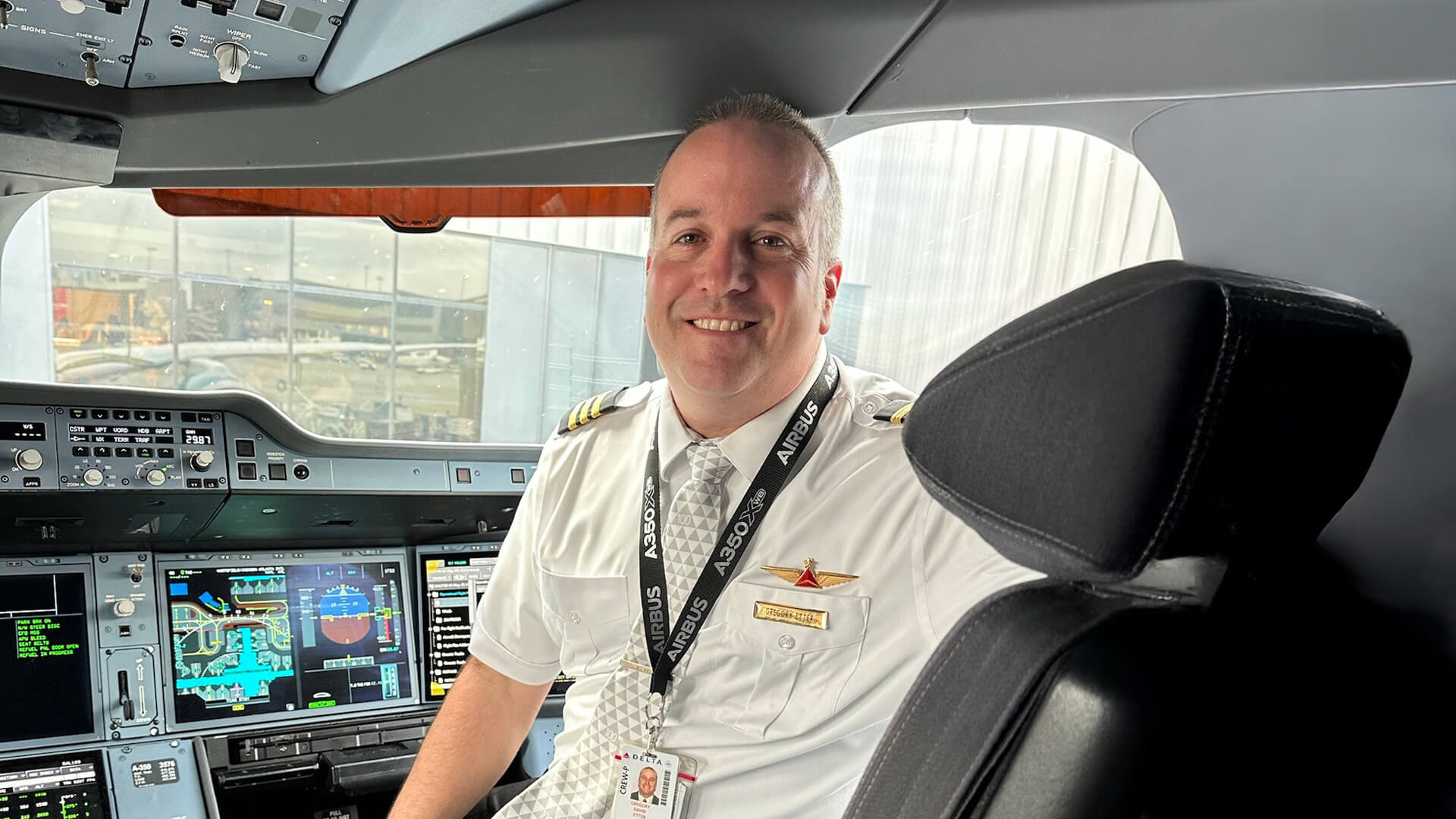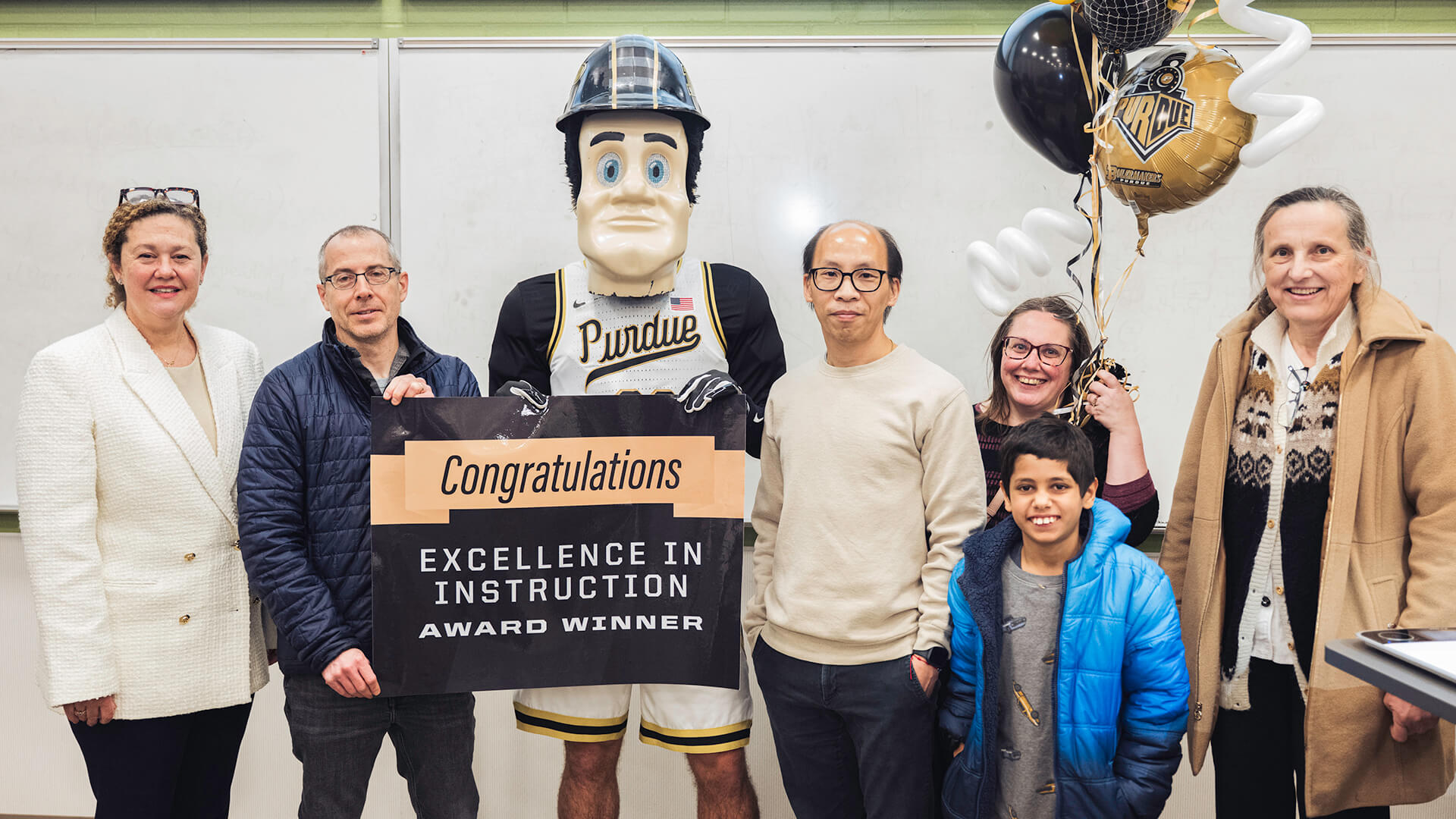Renovations modernize PMU dining level while celebrating Purdue’s history
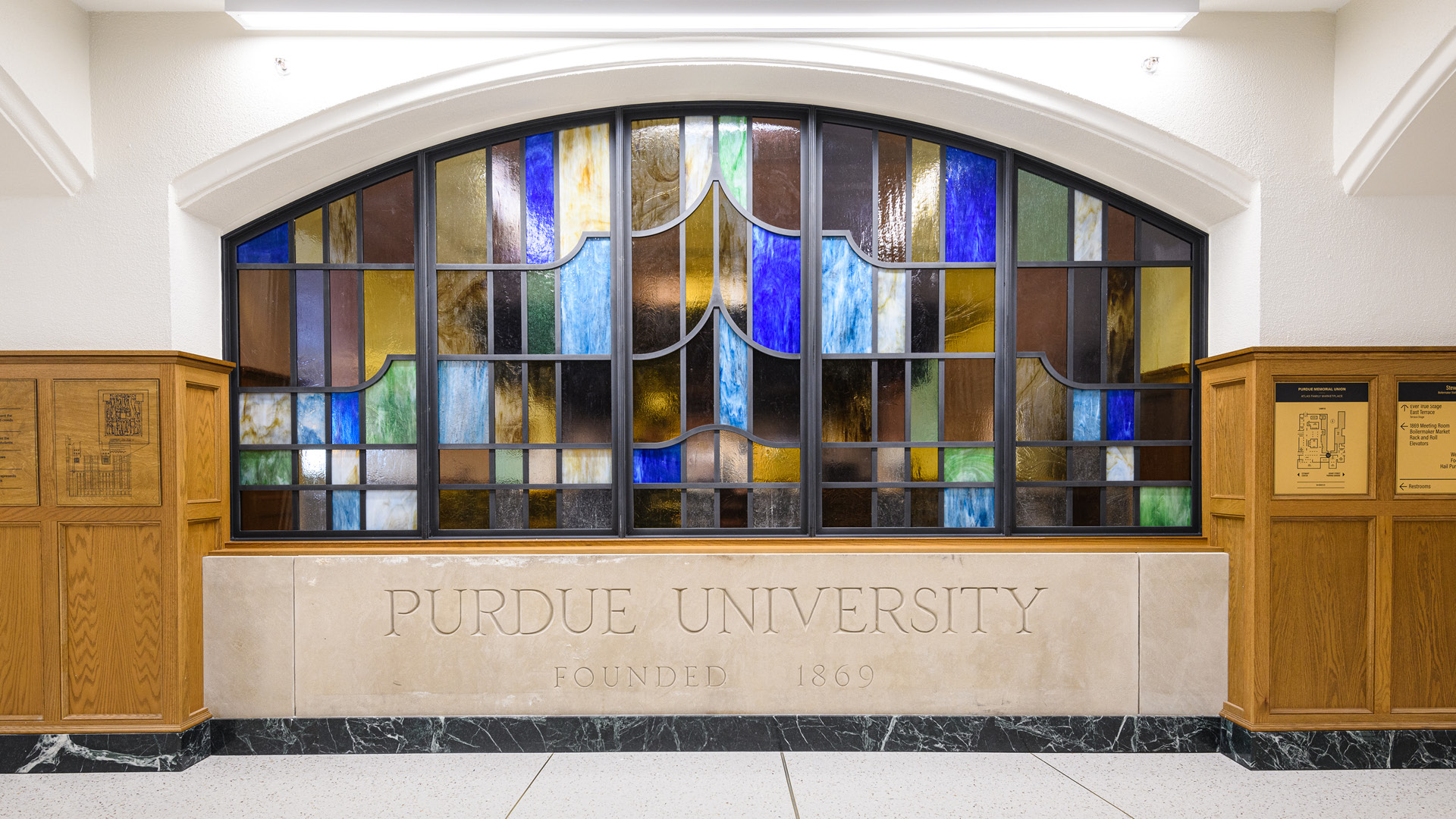
The limestone slabs that once welcomed visitors to campus at the corner of Grant and State streets have been repurposed as part of the renovations at Purdue Memorial Union. This slab now sits at the base of the Great Hall stairwell, while the other is positioned near the PMU’s west tower stairs. (Photo by John Underwood/Purdue Marketing and Communications)
Outdoor terraces, stages, Drew Brees-owned sports bar among new additions that bolster visitor experience
The Purdue Memorial Union’s founding was rooted in reverence for Purdue’s past — specifically for the 4,013 Boilermakers who fought and 67 who died during World War I in the years immediately preceding the Union’s 1924 debut.
With those historic ties in mind, it should come as no surprise that planning can become laborious whenever the University announces periodic facelifts for a building that is so integral to Purdue tradition. The Union’s reverential aesthetic is sacred to many Boilermakers who appreciate that its defining features largely remained intact across generations.
“The Union is special in that when alumni come back to campus, they love to go to the Union building and walk down that hallway,” says John Sautter, Purdue’s vice president for housing and food service emeritus and former senior advisor to the Purdue Alumni Association. “It’s as if they’re talking to the paneling and they say, ‘Remember me? I was here.’ And they can almost hear it say, ‘Yes, welcome back.’”
The trick with any renovation of such a beloved building is to make changes that address the evolving needs of the current and future students who will dine, study and socialize there while maintaining the sense of familiarity that matters so much to tradition-minded alumni.
That balancing act confronted Zane Reif, PMU senior director, and his many collaborators on the substantial renovation to the Union’s ground-floor dining level that will be formally dedicated on April 28. Thanks to the group’s purposeful planning, Reif says the $47 million renovation includes elements that should excite both constituencies.
“This is kind of restoring it to that original 1920s feel,” Reif says. “You see the wood paneling in there, you see the tile, you see terrazzo that matches. There’s a fireplace lounge down there that has an original old fireplace we found and restored. It has a lot of historical context, but with modern amenities.”
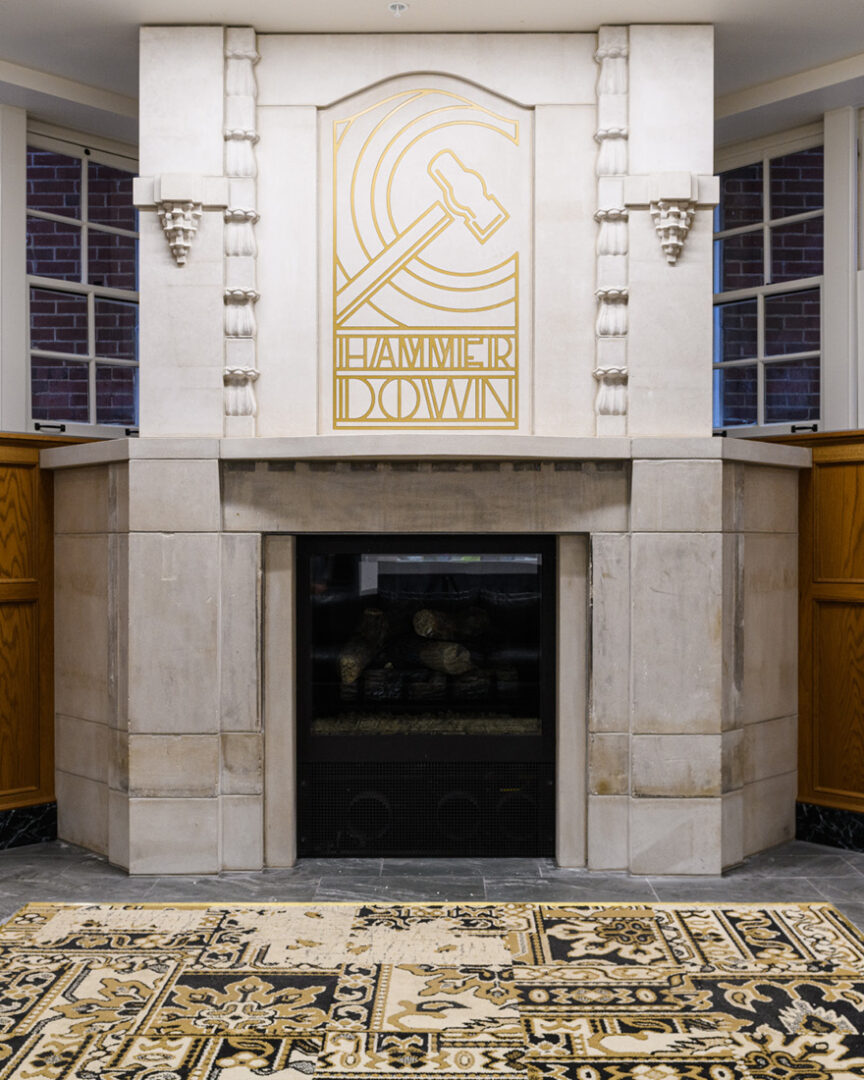
Make no mistake, this is an ultra-modern space complete with 12 food outlets — including the Louisiana-inspired Walk-On’s Sports Bistreaux, co-owned by Purdue football legend Drew Brees — plus inviting outdoor seating terraces with fire pits, four performance spaces, increased seating capacity and lots of Boilermaker nostalgia.
Now known as the Atlas Family Marketplace following a $2.5 million gift from the Robert and Judith Atlas Family Foundation, the PMU’s ground floor looks like an entirely different space to most visitors. But when they see the many nods to Purdue and PMU history embedded within the new layout, even staunch Purdue traditionalists can find elements to appreciate.
“I think stuff like that calms people’s anxieties about change and a building that’s been around for such a long time changing so drastically,” says Eeman Khan, outgoing president of the Purdue Student Union Board, whose organization regularly consulted with foodservice vendor Aramark as well as design firms Tipton Associates and Workshop Architects. “When you go in there and you see these different things, you still get that feeling of, ‘This is historic and this is part of Purdue,’ and it’s not just something that they whipped up in a day and stuck a Block P on. It’s something they really thought about. They considered the story and the history of all of it.
“I was very happy with a lot of the little touches that they included. I think they’re going to be something not just students will enjoy, but alumni who come back are still going to be happy about. While things might be very different, they’re still very historic and very much part of the Purdue legacy.”
I was very happy with a lot of the little touches that they included. I think they’re going to be something not just students will enjoy, but alumni who come back are still going to be happy about. While things might be very different, they’re still very historic and very much part of the Purdue legacy.
Eeman Khan, outgoing president of the Purdue Student Union Board
Let there be light
According to Bob Mindrum, PMU director from 1995 to 2016, student union leaders have long referred to their facilities as the living rooms of their campuses. They exist to provide students with a sense of home and should feature “sticky spots” where students are happy to spend large blocks of time.
“It’s not a simple matter of putting four or five chairs and a sofa in a room,” Mindrum says. “You’ve got to do something to the space to make students want to stay there, and that’s the sticky part.”
Planners created such spaces with the comfortable fireplace lounge, performance stages, billiards area, seating improvements (not only did indoor seating capacity increase from roughly 700 to 900, but there is now a variety of hard and soft seating options) and widely available electrical outlets for students who need to charge their laptops or other devices.
“I’d definitely say students will be most excited about the outlets. That’s not even a joke,” says a chuckling Khan, a senior in civil engineering from Austin, Texas. “I think that’s really a big draw. If you’re going to study there for a while, then you’re definitely going to need to plug in.”


A defining feature of the renovated space, however, is the natural light that fills the hallowed halls. This welcome change is in large part due to the new terraces on either side of the Union’s main entrance that alter the building’s appearance.
“The southern exposures bring in beautiful natural light,” Mindrum says. “And then having those outside areas, I think that’s going to really knock people’s socks off. As far as I’m concerned, that’s part of the juggling act. If students and others love it, and it’s a sticky place where they want to come and sit, and if you still pay homage to the architecture itself, I think it’s a great idea.”
In fact, the terraces’ 11,000 square feet of space to eat, meet, study and socialize provide Reif and the student organizations who use the building with programming options that never existed before. And don’t forget about the other members of the Purdue community who visit campus for special occasions.
We’ve never had the ability to use indoor-outdoor space here at the PMU. I think it’s going to transform the way that students use the Union, but I think it also is really impactful for the community.
Zane Reif, Purdue Memorial Union senior director
“We’ve never had the ability to use indoor-outdoor space here at the PMU,” Reif says. “I think it’s going to transform the way that students use the Union, but I think it also is really impactful for the community. I can see it being really big before games, on the weekends for family members and those types of things. It should be a fun spot.”
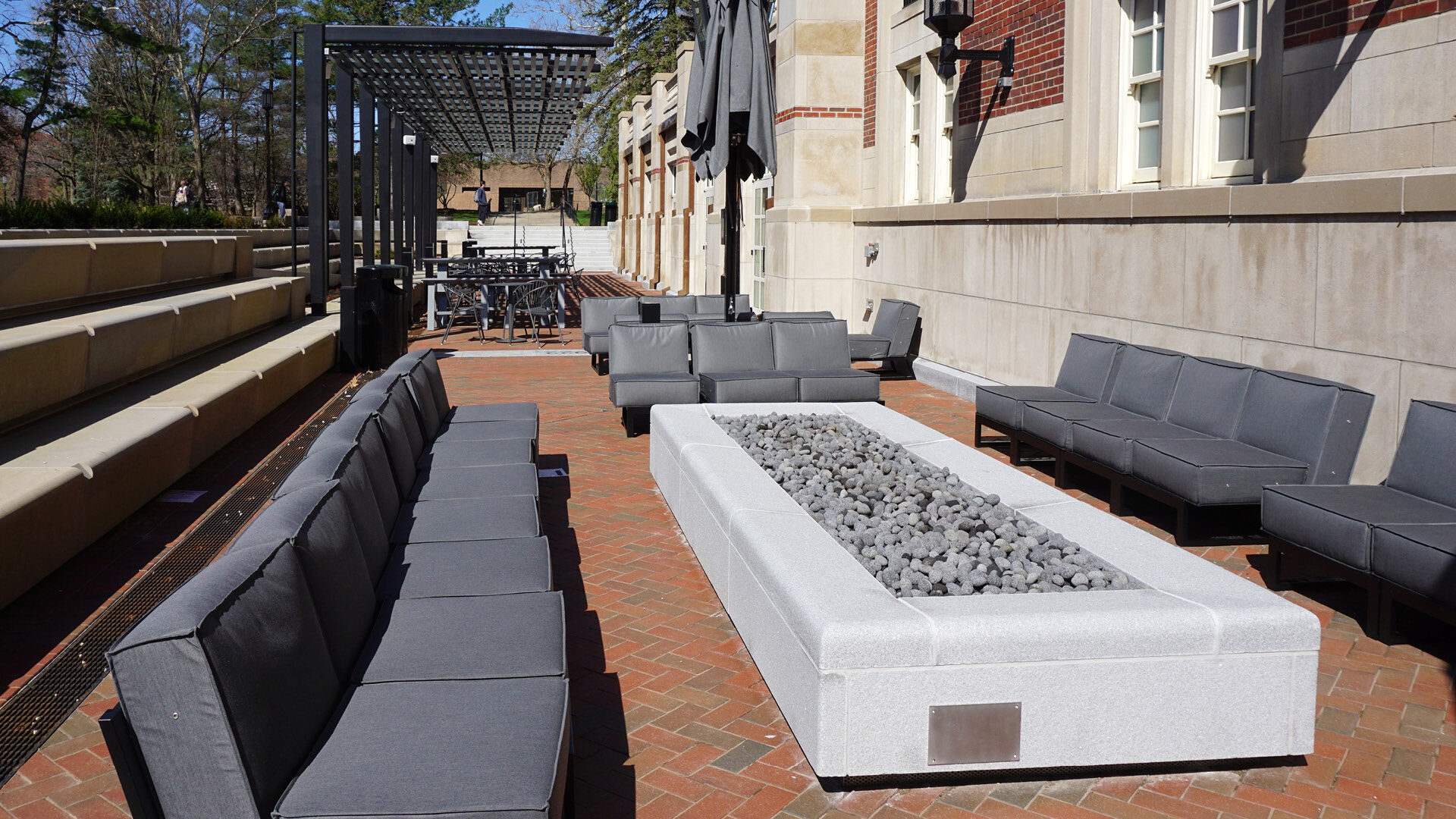
Dining options galore
Internationally diverse universities like Purdue must provide dining options that suit a wide range of taste palettes, and the variety available in the new PMU food hall meets this challenge.
In addition to favorite food options like pizza, barbecue and Mexican, there are kiosks serving halal foods, sushi, poké, fresh greens and options for those with dietary restrictions. In the location that once housed the Purdue Team Store (which has been relocated to Stewart Center) is the Boilermaker Market at PMU, a new convenience store that also sells fresh foods.
Two of the more unique dining options stem from a partnership between Aramark and Chicago-based Cornerstone Restaurant Group, which launched NBA legend Michael Jordan’s restaurant brand.
Bill Kim, a Cornerstone partner and chef, is the driving force behind multiple PMU dining options, most notably an eponymous location selling authentic Asian dumplings and bowls. Meanwhile, chef John Manion’s Latin outlet serves Brazilian and Argentinian cuisine.
“The food is really unique. It’s not the type of food you’ll get anywhere else,” Reif says. “There’s not another place in Lafayette or West Lafayette where you’ll have this option where you walk up and there’s a chef’s choice, where Bill Kim is figuring out what he wants to do for the day, and you can grab it and eat it.”
Rounding out the dining options are arguably the two most important pieces: Walk-On’s and the PMU-based Starbucks that Reif says is among the ubiquitous coffee chain’s busiest locations in Indiana.



Walk-On’s restaurant, founded by two former walk-ons on the Louisiana State University basketball team, emerged in recent years as one of the nation’s hottest franchising brands. While it serves the burgers and fries that are staples in any sports bar, Walk-On’s menu also features items like gumbo, crawfish étouffée, alligator and boudin balls that are unique to the chain’s Louisiana home.
The Brees connection made Walk-On’s a no-brainer when Purdue began its search for a dining outlet to anchor its ground-level overhaul, and, of course, the former Boilermakers star figures into the location’s décor. Included in a Walk-On’s wall mural celebrating Purdue athletics legends is a photo of Brees and his Purdue coach, Joe Tiller, celebrating a win over Indiana that clinched the Boilermakers’ spot in the 2001 Rose Bowl.
Reif expects the new Walk-On’s location to be at its best when such pivotal moments in sports are airing on the restaurant’s 55 (yes, 55!) TVs.
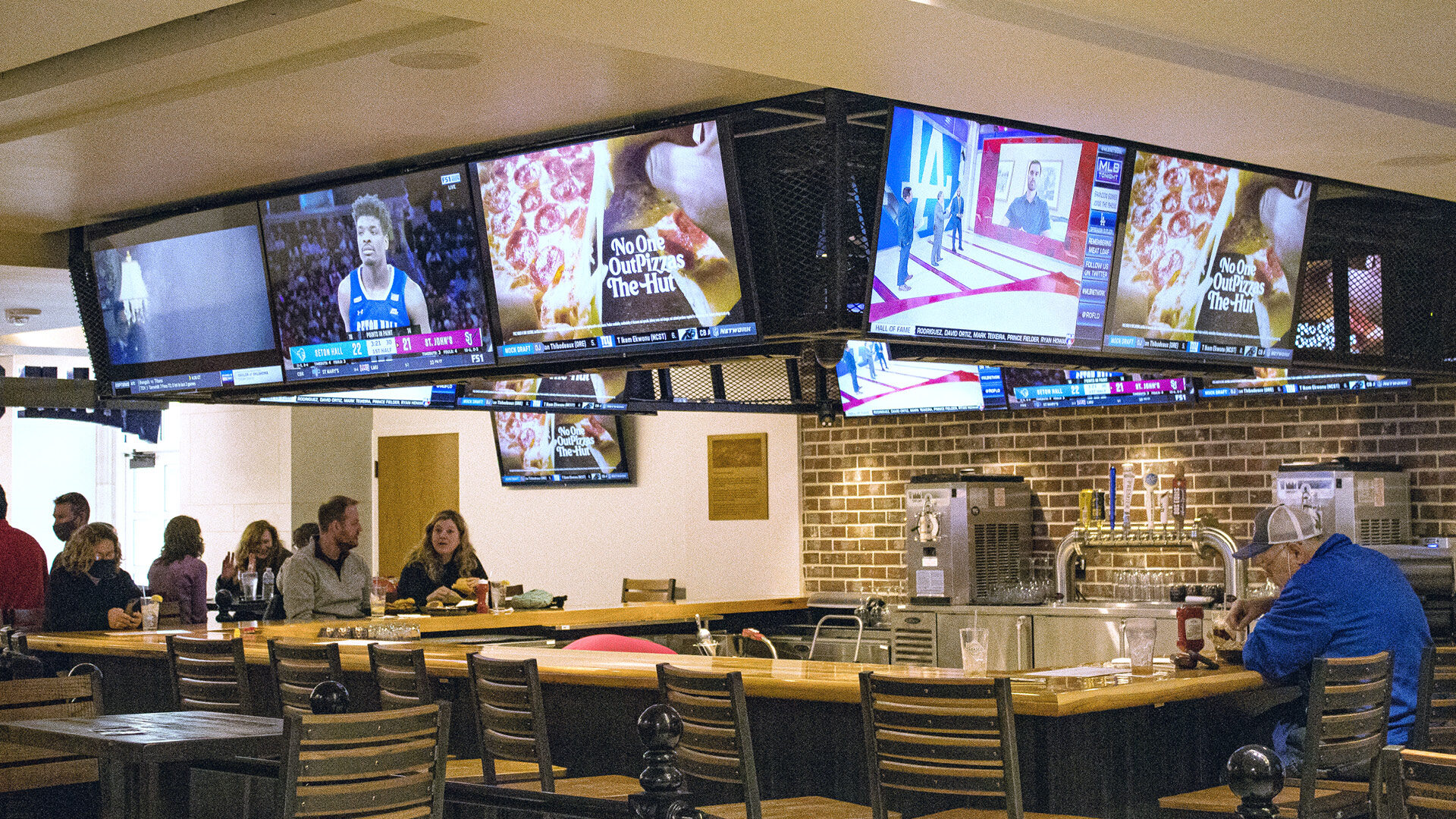
“For the longest time, the Union was kind of a museum, and people came in and thought they had to be really quiet because students are studying and that type of thing,” Reif says. “I think we’re trying to get out of that feel for the ground floor and say, ‘No, this is going to have activity. It’s going to have music. It’s going to have sports on. It’s going to be loud.’ And loud not to an obnoxious point, but loud like, ‘Hey, there’s going to be life down there.’ If you want life, then you’re going to go down to the ground floor.”
Situated inside the coffeehouse area next to Starbucks is the “Hail Purdue” stage, which will typically feature performers on the mellow end of the musical spectrum and spoken-word artists. Next to Walk-On’s is the “Ever True” stage that will feature louder acts and activities and perhaps even battle-of-the-band events in conjunction with a nearby stage at an outdoor terrace.
Reif maintains that the previous ground-floor layout was far from ideal from a programming perspective, but he believes the open floor plan and addition of the four stages are game-changers for student groups. Khan agrees, noting that the Purdue Student Union Board can now offer consistent programming there where students know that certain events will take place each week or month.
“People really wanted some good areas to put on events, so this definitely provides that opportunity for them,” Khan says. “To have such a nice, new, dazzling location, I think that will be a really exciting part of this.”
Respecting tradition
Reif may not want the PMU’s ground level to function like a museum, but included in the 67,000 square feet of renovated space are plenty of historical artifacts.
At Walk-On’s, designers erected sections of the smoker’s fence that long encircled the Purdue campus to establish an area where over-21 customers sit at the bar. And the bar’s footrail? Actual tracks from the rail line that once ran down State Street.
Also inside Walk-On’s is a section dedicated to Pappy’s Sweet Shop, the beloved diner that existed in the Union from 1927 until its closing in the summer of 2020 when PMU renovations began. The Pappy’s section includes one of the restaurant’s old wooden booths where many a Boilermaker carved their name through the years.
Mindrum, who worked on a special project outlining the PMU’s archival history before retiring in 2019, notes that the new location of the Pappy’s booth is in almost the exact same spot as the Union’s first soda fountain that eventually became the Sweet Shop.
“Walk-On’s has been really great about this because we have the whole area dedicated to Pappy’s and it talks about the creamery and its history,” Reif says. “Walk-On’s actually put together an original Pappy’s shake to be able to share from the Sweet Shop. It’s kind of a nice fusion of what we’re doing there.”


A landmark even more noteworthy than the Pappy’s booth has also found a home within the new ground-floor layout: Purdue brought “Stone’s Stones” out of temporary retirement.
In 1984, Purdue’s Panhellenic Association showed its appreciation for Beverley Stone, former dean of women and dean of students, by erecting two limestone markers in her honor at the corner of Grant and State streets. The landmark was a popular spot for graduation photos for many years before Purdue replaced it in 2018 with the plaza and arch that currently welcome visitors to campus.
The massive limestone slabs sat in storage for three years until Michael Gulich, Purdue’s senior director of campus planning, architecture and sustainability, suggested that they be included in the PMU renovation plans.
One of the stones is positioned at the base of the Great Hall stairwell below one of the PMU’s trademark stained-glass fixtures, creating arguably the most scenic (and Instagrammable) spot in the renovated space. The other stone is positioned near the PMU’s west tower stairs.
“I worked with Dean Stone quite a bit, and I was just so glad to see that they were going to incorporate them,” says Sautter, who served as an administrator over the PMU for his last 14 years as a full-time Purdue employee. “Purdue does a nice job of remembering those kinds of things and saving things.”
There are many other features dedicated to Purdue history within the renovated space, but PMU visitors should be sure to check out one more notable location. Sections of brick and concrete that are original to the Union building are exposed in displays toward the center of the dining space, giving the area an industrial look.
“There’s a lot of historical elements that are really cool about this,” Reif says. “And that doesn’t even include the Easter eggs and fun stuff where you’ll be able to walk up and read a plaque and go, ‘Oh, I didn’t know about the Old Pump,’ or, ‘I didn’t know about this or that part of Purdue.’ There’s a lot of really cool elements.”
Incorporating these elements is part of the juggling act that University leaders must perform whenever they make changes to historic campus landmarks, says Rob Wynkoop, associate vice president of auxiliary services. As important as the nods to tradition are among alumni who still love to visit the Union, they are an equally vital way to preserve institutional memory by informing a new generation of Boilermakers about Purdue’s history.
“Purdue’s traditions are a big part of why this University is such a unique place, and we always want to honor them,” Wynkoop says. “At the same time, this renovation has already expanded the role that the Union plays for our students and guests. With these updates, we really believe there is something for everyone.”
